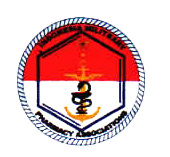The End of the United States Naval Medical Research Unit-2 Project in Indonesia From a Cooperative Security Perspective
(1) Padjadjaran University
(2) Padjadjaran University
(*) Corresponding Author
Abstract
The presence of NAMRU-2 in Indonesia has created pros and cons in the community. NAMRU-2, or Naval Medical Research Unit-2, is a United States military medical research unit that operates in various countries, including Indonesia—several pro and con arguments related to its presence in Indonesia in realizing cooperation security. This study aims to investigate NAMRU-2’s role in fostering cooperative health security in Indonesia and examine why the government chose not to renew its cooperation between NAMRU-2 and Indonesia. This study used a qualitative research method with a descriptive approach. The data obtained in this study were obtained from literature studies and interviews. Then, the data validity process is carried out using data triangulation so that the data obtained can provide strong support for the research. The results show that NAMRU-2 in Indonesia does its job well in carrying out the mission of Military Operations Other than War in medical operations. NAMRU-2 successfully dealt with health threats in Indonesia. However, the cooperation of NAMRU-2 in Indonesia failed to realize the security of cooperation. With NAMRU-2 in Indonesia, there is still tension and a lack of trust in the United States government. In addition, the presence of NAMRU-2 made the Indonesian people feel unsafe. After the end of NAMRU-2 in Indonesia, Indonesia has not been independent regarding health security. In this regard, it can be concluded that the existence of NAMRU-2 in Indonesia cannot realize cooperative security because there are still tensions between Indonesia and the United States and the lack of trust of the Indonesian people in the United States. This is not in accordance with the definition of cooperative security.
Keywords
Full Text:
PDFReferences
Aziza, L. (2013). Keputusan Pemerintah Indonesia Menolak Perpanjangan Kerjasama dengan NAMRU-2. Universitas Jember.
Budiono, A., Absori, A., Zuhdi, S., Kurnianingsih, K., Inayah, I., Bangsawan, M. I., & Yuspin, W. (2022). National Health Security Policy in Indonesia: A Narrative Review from Law Perspective. Open Access Macedonian Journal of Medical Sciences, 10(E), 183–187. https://doi.org/10.3889/oamjms.2022.8142
detikNews. (2009). Sejarah Namru-2 Berakhir 16 Oktober 2009. https://news.detik.com/berita/d-1226054/sejarah-namru-2-berakhir-16-oktober-2009
Devita, Y. S., & Olivia, Y. (2014). Kepentingan Amerika Serikat dalam Mempertahankan Proyek Naval Medical Research Unit Two (NAMRU 2). Journal Online Mahasiswa FISIP Universitas Riau, 1(1), 2319.
Dewi, I. (2020). Pengembangan Sistem Kewaspadaan Dini Penyakit New-Emerging dan Re-Emerging, Studi Kasus pada Penyakit Mers-Cov dan Ebola di Kantor Kesehatan Pelabuhan Soekarno-Hatta. Journal of Information Systems for Public Health, 3(1), 1–8.
Ear, S. (2014). Towards Effective Emerging Infectious Disease Surveillance. Politics and the Life Sciences: The Journal of the Association for Politics and the Life Sciences, 33(1), 69–78. https://doi.org/10.2990/33_1_69
Hendrapati, M. (2014). Legal Regime of Persona Non Grata and the Namru-2 Case. Journal of Law, Policy and Globalization, 32, 161–171.
Jones, T. R., Baird, K., Bangs, M. J., Annis, B. A., Purnomo, Basri, H., Gunawan, S., Harjosuwarno, S., McElroy, P. D., & Hoffman, S. L. (1994). Malaria Vaccine Study Site in Irian Jaya , Indonesia : Plasmodium Falciparum Incidence Measurements and Epidemiologic Considerations in Sample Size Estimation. The American Society of Tropical Medicine and Hygiene, 50(2), 210–218. https://doi.org/10.4269/ajtmh.1994.50.210
Laras, K., Van, C. B., Bounlu, K., Tien, N. T. K., Olson, J. G., Thongchanh, S., Anh, T. N. Van, Loan, H. K., Punjabi, N., Khiem, H. B., An, U. S., Insisiengmay, S., Watts, D. M., Beecham, H. J., & Corwin, A. L. (2002). The Importance of Leptospirosis in Southeast Asia. The American Society of Tropical Medicine and Hygiene, 67(3), 278–286. https://doi.org/10.4269/ajtmh.2002.67.278
Lederman, N. G., Abd-El-Khalick, F., Bell, R. L., & Schwartz, R. S. (2002). Views of Nature of Science Questionnaire: Toward Valid and Meaningful Assessment of Learners’ Conceptions of Nature of Science. Journal of Research in Science Teaching, 39(6), 498. https://doi.org/https://doi.org/10.1002/tea.10034
Mihalka, M. (2005). Cooperative Security in the 21st Century. Connections, 4(4), 113–122.
Miles, M. B., Huberman, A. M., & Saldana, J. (2020). Qualitative Data Analysis : A Methods Sourcebook (H. Salmon (ed.); 4th ed.). SAGE Publications.
Miller, R. N. (2001). Perspectives on The Department of Defense Global Emerging Infections Surveillance and Response System. In N. A. Press (Ed.), Institute of Medicine (US) Committee to Review the Department of Defense Global Emerging Infections Surveillance and Response System (A Program). National Academies Press. https://doi.org/10.17226/10203
Moleong, L. J. (2018). Metodologi Penelitian Kualitatif (T. Surjaman (ed.); 40th ed.). PT Remaja Rosdakarya.
Naval Medical Research Command. (2024). About NMRC. Bureau of Medicine and Surgery. https://www.med.navy.mil/Naval-Medical-Research-Command/About-NMRC/
Nevgloski, E. T. (2018). Planning for War : The Marine Corps in Contingency Planning for Indochina and South Vietnam, 1951-65. Marine Corps History Winter, 4(2), 27–41. https://doi.org/10.2307/2225735
Purwanto, W. H. (2008). “Mencurigai” Namru-2 (D. Suito & I. Siherlan (eds.); 1st ed.). Cipta Mandiri Bangsa.
Putnam, S. D., Sedyaningsih, E. R., Listiyaningsih, E., Pulungsih, S. P., Komalarini, Soenarto, Y., Salim, O. C., Subekti, D., Riddle, M. S., Burgess, T. H., & Blair, P. J. (2007). Group A Rotavirus-Associated Diarrhea in Children Seeking Treatment in Indonesia. Journal of Clinical Virology, 40(4), 289–294. https://doi.org/10.1016/j.jcv.2007.09.005
Putranto, N., Tjahjowiduri, L. I., & Fitriani, E. (2021). Etika Pelayanan Kesehatan Militer pada Operasi Militer Selain Perang (OMSP).
Rosy, A. F. (2020). Kerjasama Internasional Indonesia: Memperkuat Keamanan Nasional di Bidang Keamanan Siber. Journal of Government Science (GovSci): Jurnal Ilmu Pemerintahan, 1(2), 118–129. https://doi.org/10.54144/govsci.v1i2.12
Shalikashvili, J. M. (1995). Joint Doctrine for Military Operations Other than War (MOOTW). Joint Pub 307. In Joint Publication (Issue June). https://doi.org/ADA323824
Suwandono, A., Rukmantara, T. A., & Budiman, R. P. (2010). The Dance of Minds: 35 Tahun Badan Litbangkes 1975-2010. In Anorital & D. A. Musadad (Eds.), Kementerian Kesehatan Republik Indonesia (2nd ed.). BALITBANGKES.
Tursina, Z. E., Soesilowati, S., & Susanto, S. R. (2023). Norma Politik dan Bantuan Multilateral: Strategi Jepang dalam Mengatasi COVID-19 di Indonesia. Intermestic: Journal of International Studies, 8(1), 19. https://doi.org/10.24198/intermestic.v8n1.2
DOI: https://doi.org/10.33172/jp.v10i3.19659
INDEXED BY:
Office Address:
Lembaga Penelitian dan Pengabdian Kepada Masyarakat
Republic of Indonesia Defense University
Jl. Salemba Raya No.14, Paseban,Jakarta Pusat, Daerah Khusus Ibukota Jakarta 10440, Indonesia
Email: jurnal.unhan@idu.ac.id

Jurnal Pertahanan: Media Informasi tentang Kajian dan Strategi Pertahanan yang Mengedepankan Identity, Nasionalism dan Integrity is licensed under a Creative Commons Attribution-NonCommercial 4.0 International License.




